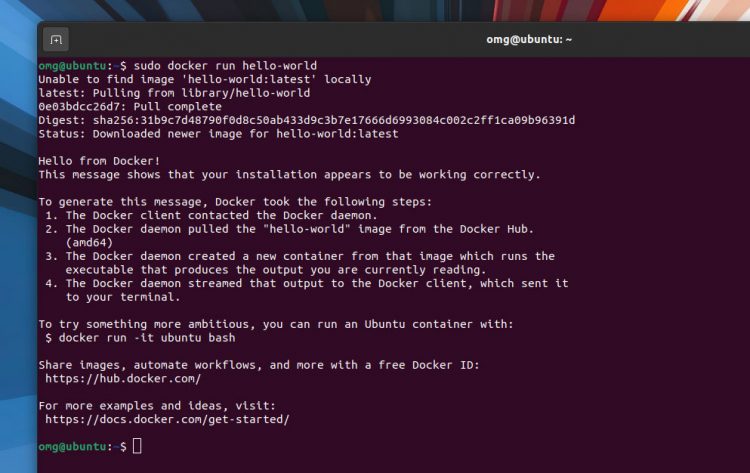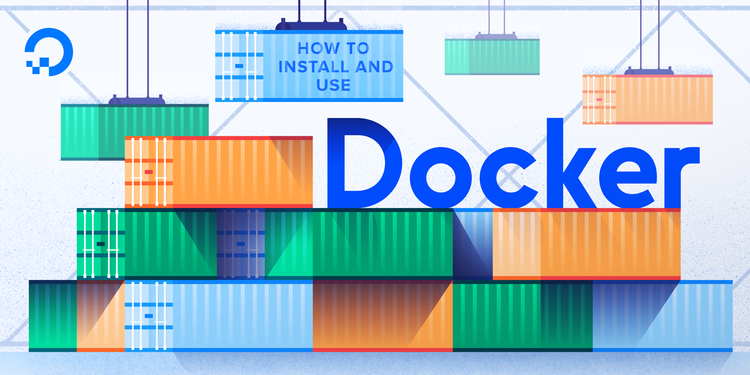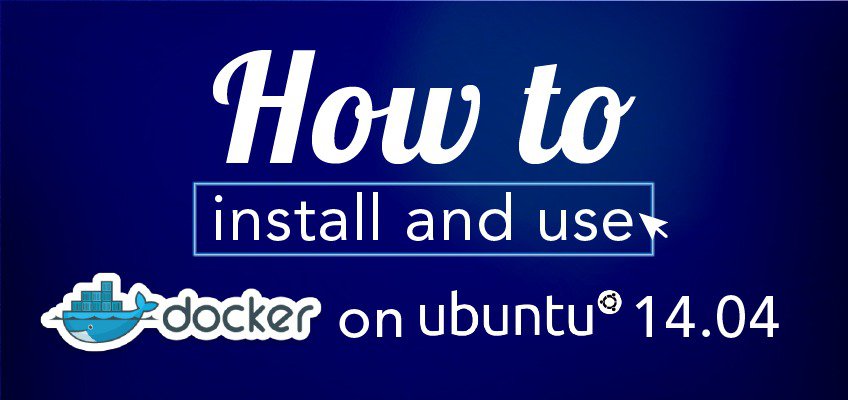These days, Ansible is a big buzzword in the IT industry. It is a radical automation DevOps tool for IT orchestration.


# Debian and Ubuntu sudo apt-get update # CentOS sudo yum update. Check that you have the curl command line utility. It comes preinstalled with most Linux distributions, but if it can not be found, install it manually with the appropriate command for your OS. # Debian and Ubuntu sudo apt-get install curl # CentOS sudo yum install curl. Docker Hub It is possible to get Docker images of Redis from the Docker Hub. Multiple versions are available, usually updated in a short time after a new release is available. For Debian/Ubuntu, OpenCFD works actively with the Debian (science) maintainers to improve the packaging, but also provides its own early-release repository. Up-to-date information can be found on our wiki page.
Ansible is an open-source tool by Red Hat. It helps to configure, provision, deploy and manage your system infrastructure across without facing any hassle.
Ansible is agentless and requires no extra software with it. It can connect via SSH, remote PowerShell, and with remote APIs. It also uses a human-readable language, YAML so that one can easily adapt Ansible.
You have everything you need for your system automation in a complete package through Ansible.
How to install Ansible on Linux
In this first article on Ansible, you’ll learn about installing Ansible on various Linux distributions.
Personally, I prefer to get system information before installing any kind of software. Because It may help you in many aspects for different versions of an operating system.
Installing Ansible on Ubuntu and other Debian-based Linux distributions
Ansible is normally found in the default repositories of Ubuntu and Debian. You can use the command below to install it:
If Ansible package cannot be found, you can add the project’s PPA (personal package archive) to your system. You can add Ansible PPA by using the following command:
As you have added a new software source, you have to update your system to get packages available in the PPA. Update the software repositories list with this command:
Finally, you can install Ansible using this command:
After successful completion of the above command, Ansible will be installed on your system.
You should verify the installation by checking the version of Ansible you just installed:
Installing Ansible on CentOS, Red Hat, Fedora, SUSE etc
To install the latest version on Ansible in CentOS , you should install EPEL (Extra Packages for Enterprise Linux) first using the below command:
Then you can easily install Ansible using this command:
You can check Ansible version using this command:
and its output
How to uninstall Ansible
If you want to uninstall Ansible for some reasons, you can easily do that.
Uninstall Ansible from Ubuntu/Debian
You can uninstall or remove Ansible from Ubuntu. Use this command:
But if you want to remove Ansible along with its all dependency packages. Use this command:

Uninstall Ansible from CentOS/Red Hat
You can uninstall or remove Ansible from CentOS using this command:
In the next article, I will cover how to connect and access several machines through SSH connection establishment using Ansible. Stay tuned for the Ansible tutorial series.
Become a Member for FREE
Join the conversation.
RPM Installation
For openSUSE users, OpenCFD Ltd. is working with the community SciencePortal and the build service to provide OpenFOAM as precompiled RPMpackages.
Simply go to the download pagehttps://software.opensuse.org//download.html?project=science&package=openfoam2006and follow the instructions there.
If you already have the Science repository registered on your system, youshould be able to install it directly with dnf (Fedora) or zypper (openSUSE) orwith graphical tools such as YaST2.
Note that the science repository also includes the latest versions of scotch andParaView for using with OpenFOAM.

Up-to-date information can be found on our wiki page.
Fedora, RedHat
For RedHat-based systems, OpenCFD Ltd. current uses the copr infrastructure toprovide RPM packages. These pre-compiled packages leverage standardcomponents available from EPEL (Extra Packages for Enterprise Linux) and someelements of PowerTools as well.
Up-to-date information can be found on our wiki page.
Ubuntu
For Debian/Ubuntu, OpenCFD works actively with the Debian (science)maintainers to improve the packaging, but also provides its own early-releaserepository.
Up-to-date information can be found on our wiki page.
Docker
OpenCFD Ltd. uses Docker Hub to distribute pre-compiled versions ofOpenFOAM for Linux, Mac OS X and Windows, including a completedevelopment environment.
Docker containers enable binaries compiled on a given Linux environment tobe run on other platforms without any performance degradation. Docker alsooperates on Windows and Mac OS X wrapped in a light-weight VirtualBox.
An image of OpenFOAM contains binaries and source code. The Dockerenvironment provides:
- A complete development environment to compile local modifications and create executables.
- A consistent behaviour of the OpenFOAM across all platforms
Check if your (Linux or Windows or Mac OS X) system is supported by visitinghttps://docs.docker.com/engine/installation/
Installing Docker

Docker is available in two editions: Community Edition (CE) and EnterpriseEdition (EE). For installing and running the OpenFOAM image, the CommunityEdition is sufficient. Please see:
https://docs.docker.com/engine/installation/
Installing and running OpenFOAM
- Make sure the user is in the group ‘docker’. This can be checked with The list of groups should include docker.
- Make sure the Docker daemon is running:
- Download the following scripts from the release instructions and put them in a local directory (e.g. home directory)
- Make the install script executable
- Download and create the Docker container for OpenFOAM by executing the first script
- This only needs to be done once per login. The first ever invocation will download the whole OpenFOAM installation so might take some time to finish. Any future invocations will take a few seconds only.
- Make the start script executable
- Start the Docker container with the second script:
- This will open a new shell with the OpenFOAM environment fully installed and ready to use, e.g.mkdir -p $FOAM_RUN
run
cp -r $FOAM_TUTORIALS/incompressible/icoFoam/cavity/cavity .
cd cavity
blockMesh
icoFoam - All user files inside the Docker environment are available on the host inside the home directory.
Frequently Asked Questions on Docker
Docker Ubuntu Install Node
- Is there any performance degradation when running via Docker?
No performance penalties are expected. On Linux, OpenFOAM inside Docker should run as fast as natively compiled code. On Windows and Mac OS X there may be a slight performance penalty associated with I/O. - How do I check if the OpenFOAM image has been downloaded correctly?
Type the command to show the images available in Docker environment, e.g.REPOSITORY TAG IMAGE ID CREATED VIRTUAL SIZEIf you receive an error message about not being able to contact the Docker daemon check that
openfoamplus/of_v1706_centos73 latest 88d542266184 4 hours ago 1.574 GB- the Docker daemon is started at boot time
- the user account is in the group ‘docker’
- Where are my files?
The user files inside Docker are visible (i.e. mounted) in your home area and can be operated on just like any other file. - Why doesn’t paraFoam display?
- Make sure that your machine’s software is fully up-to-date. See if you can start a simple X-windows, non-graphics program, e.g.: xterm If this does not come up there may be a problem with the xhost access to the host screen. This is one of the steps inside the startOpenFOAM script.
- An alternative remedy is to install the native ParaView version for your system, and use the built-in OpenFOAM reader and/or OpenFOAM data conversion tools.
- How do I run parallel?
Same as any other OpenFOAM installation, e.g.: mpirun -np 2 icoFoam-parallel - How do I run parallel on multiple computers?
This is not trivial inside the Docker environment. Also you might want to include optimised communication libraries (MPI) so it probably makes more sense to perform a native compilation. - How do I compile code?
The Docker environment contains a full OpenFOAM development environment so all Allwmake, wmake, wclean etc. commands work (it is running the actual environment OpenFOAM was compiled in!) - What does installOpenFOAM do?
It downloads the OpenFOAM image from the Docker Hub and creates a specialised container. This container- mounts the home directory of the user with read/write access
- optionally channels the graphics
- sets up the OpenFOAM environment.
The image itself was created from CentOS 7.3. If you wish to install any additional tool in your docker container, start it as usual via the startOpenFOAM script, login as root with the password openfoam and use e.g. yum.
- I still have questions...
The Docker route to OpenFOAM is new and still being refined. It you have comments/tips please mail them to: docker (at) opencfd.co.uk.
